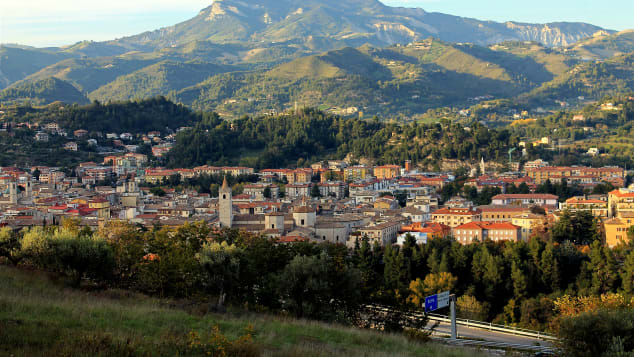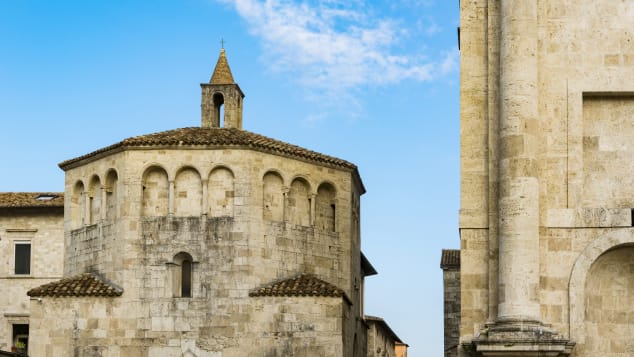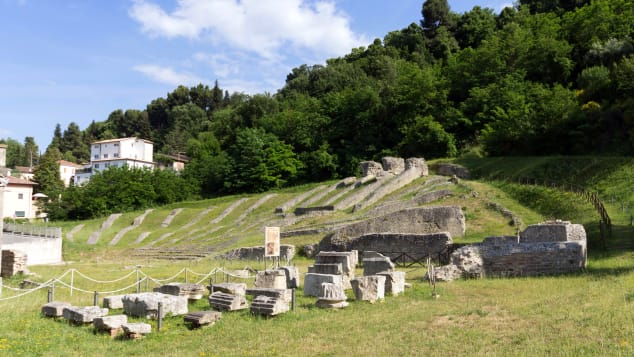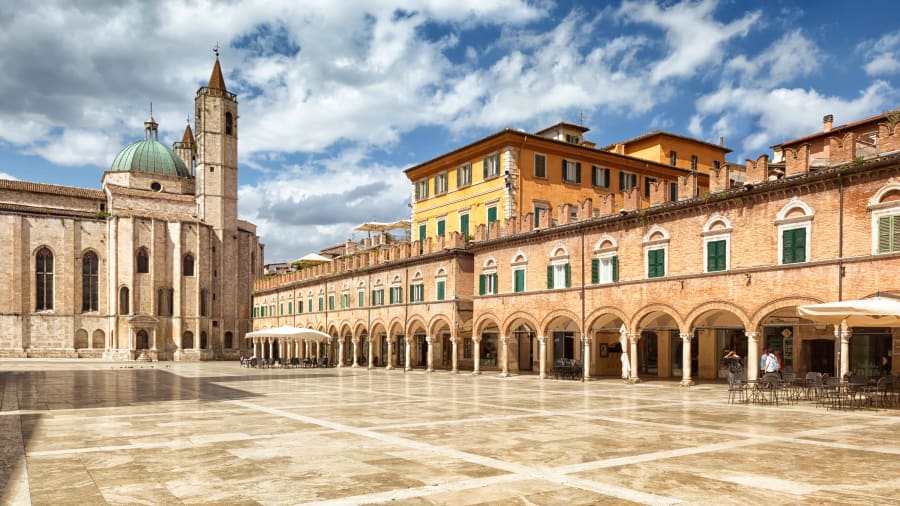CNN – Walk round Ascoli Piceno, and in some ways it could be any Italian town. There are two big squares where locals watch the days go by, sit in cafes to people-watch, and do their nightly passeggiata stroll. There are centuries-old churches and even ancient remains dating back to the Roman period. As in plenty of other Italian towns, the center was constructed in the medieval period. And, just like others, it’s been beautifully preserved.But wander round — especially at night — and you’ll notice one major difference: Ascoli appears to glow.By day, the buildings and even the paving stones glimmer in the sunlight. And at night they glow in the moonlight, the towers, porticoes and streetlights reflecting perfectly in the flooring, making the city center look like a mirage.That’s all down to the fact that Ascoli’s local rock, from which the entire historic center is constructed, is travertine: a precious stone, similar to marble, that gleams bone white in the midday sun, flushes pink with the sunset, and glows under the evening streetlights. Today, travertine — and Italian travertine in particular — is expensive. You’ll find it used in bathrooms and as flooring, rather than being used to make entire houses.But Ascoli’s travertine buildings and paving stones were laid long before it became an ultra-precious material. Many of the grand buildings you see today date back to the Roman period.
A miniature ancient Rome

Anca Emanuela Teaca/Alamy Stock Photo
Or rather, they were upcycled from Roman buildings — which is why you’ll find churches balancing on the visible remains of Roman temples, and chunks of arches and capitols blended into medieval and renaissance palazzos.The Romans weren’t the first to settle here, says Lella Palumbi, a tour guide in Ascoli. The town originally belonged to the Piceni — an ancient tribe whose territory stretched over much of the modern Marche region, from Pesaro in the north to Chieti, in modern Abruzzo. They founded the city a century before Rome was born.The Piceni were great warriors, says Palumbi, and the Romans, becoming more powerful, quickly sought to become allies. But the Piceni’s request for Roman citizenship sparked a year-long war, culminating in the capture of Ascoli. Once in, the Romans razed the city to the ground and decided to rebuild it from scratch.”That’s when the travertine Ascoli was born,” says Palumbi.A sedimentary form of limestone, travertine is formed when hot springs deposit calcium carbonate minerals. It’s notoriously porous — almost elastic — thanks to external organisms like algae, moss, bacteria — and, often, fossils.

Corinne/Adobe Stock
The Romans had already used it for their most important buildings and monuments in Rome, using quarries in Tivoli near the city — they even called the stone “lapis tiburtinus,” or “stone from Tivoli,” which was later corrupted into “travertino.”Having conquered Ascoli, the Romans noticed there were similar quarries a few miles away, off the ancient Via Salaria. They used that stone to construct a glittering new city, to demonstrate their power over even the most battle-worn foes. It was, says Palumbi, a “miniature Rome.” There were temples, a court, spa facilities and a capitol. One square, Piazza San Tommaso, is still slightly rounded today because it sits on the ancient amphitheater; just outside the city center are the remains of the Roman theater — one of the few ancient buildings to survive the medieval “recycling” of the city.
2,000 years of upcycling

AGF Srl/Alamy Stock Photo


